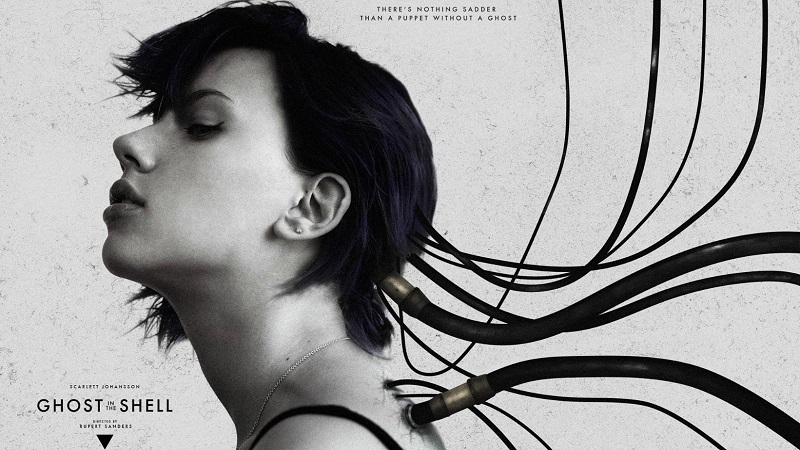When a beloved property is picked up and slated for a live-action remake or reboot, existing fans are quick to worry about what will happen to it and for good reason.
In the past, results have ranged from insultingly bad (see Dragonball Evolution) to middling (the new Power Rangers). The run of bad comic book adaptations has thankfully been brought to a close (well, mostly), and don’t even get us started on lousy movies based on videogames.
So it’s with some pleasure we can announce that Ghost in the Shell, which is based on Masamune Shirow’s seminal manga and the anime of the same name, is really rather great.
This is a movie, like the most recent offering from LEGO Batman, that manages to be a real treat for those invested in the franchise and palatable for newcomers, while only stumbling a few times along the way.
It’s likely many of our readers have either read the manga, seen the anime or both. For the rest of you, here is the pitch: in the far flung future, the Major is the lead operative of a counter terrorist group called Section 9 headed up by Chief Daisuke Aramaki (‘Beat’ Takeshi Kitano). With beer-swilling hardman Batou, it’s her job to take out criminals who pose a threat to the local authorities. Everything goes swimmingly until the group come across an enemy who alludes to knowing more about the Major than either she or her colleagues do. Down the rabbit hole we all go…
Ghost In The Shell faced a lot of issues ahead of its release. Before anyone even saw the movie fans took issue with the fact that the film’s main protagonist, referred to throughout the film as simply, The Major, was to be played by Scarlett Johansson. They cried foul at the fact that Ghost in the Shell, a distinctively Japanese creation, was to be helmed by a caucasian actress.
There may be an argument to be made that “whitewashing” such a distinctive Asian character is more than a little insensitive, but I’m not going to make one here. Instead, I have to give credit to Johansson as her performance is the glue that holds the picture together.
She nails the Major as the cool, collected, slightly wooden badass cyborg from the original anime. It might not be enough to won’t win over anyone who already decided to dislike Johansson, either for her past performances or her casting, but Johansson is rock solid throughout.
The supporting cast is similarly convincing with two stand-outs in Japanese renaissance man Kitano as Aramaki and Pilou Asbæk (probably best known for playing Euron Greyjoy in Game Of Thrones) as Batou.
While being far from the best written character here, the sheer weight of Takeshi’s presence made it stellar. We were watching the movie hoping the next scene would feature Takeshi and his commanding presence. Asbæk has the most screen time behind Johansson and he proves worthy of it. The only point to mark against his performance as one of the enforcers in the elite unit The Major heads is that he’s too young to match up to the original character, but that’s trivial.
The only other point to bring up against the performances is the language used. The concept of language in the movie is almost explained away with a piece of throwaway dialogue, but the fact that only one character speaks Japanese (Takeshi) and everyone else doesn’t is a real sore spot, especially when they introduce a Japanese character who speaks in very laboured English. Sure, if everyone is part machine that can instantly learn a language, it wouldn’t be a problem, but it is in this movie.
The film faithfully recreates the anime’s action sequences – including the iconic set-piece that begins with the Major swan-diving off a skyscraper albeit in a catsuit rather than naked. Like the anime it’s not wall-to-wall action as suggested in the trailer; rather high-octane scenes are punctuated by some pretty cerebral conversations and moments of intrigue.
Everything mentioned up to this point, however, could almost be ignored in the face of the movie’s presentation. The world of Ghost in the Shell is brought to life very convincingly; it essentially looks like Blade Runner on steroids – high rises, holograms and neon-encrusted streets – and even though it’s evident that a ton of CGI is involved, the whole landscape looks grounded in reality.
If animated media shows the world that you can draw anything you can imagine, then this movie proves it can be recreated for a live action adaptation. If this movie is beaten out for a visual effects or makeup Oscar by the next terrible DC film, there should be (non-violent) protests in the streets.
These visuals, combined with the sometimes brilliant acting really makes Ghost in the Shell a special film. Small problems in cultural consistency as well as a predictable plot and some ham-fisted attempts at the original’s philosophical elements are not enough to bring this one down.

